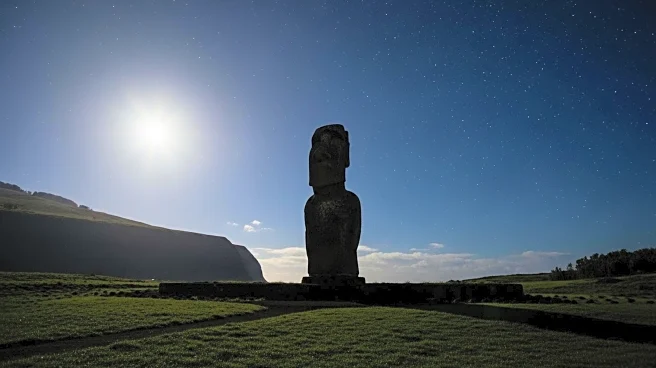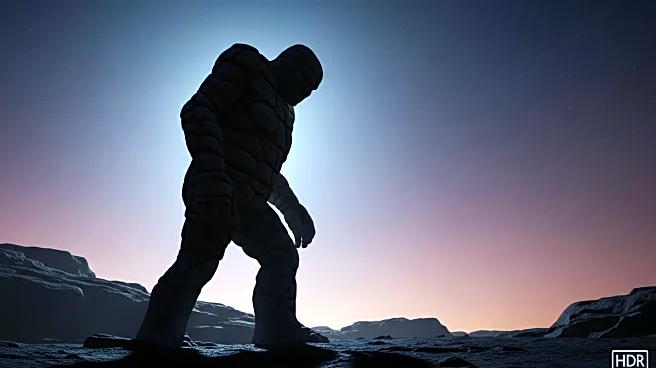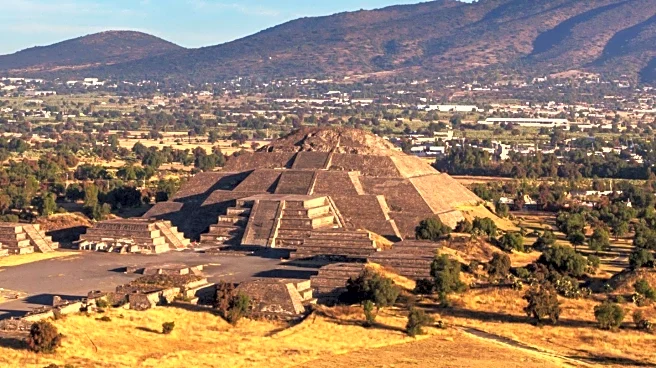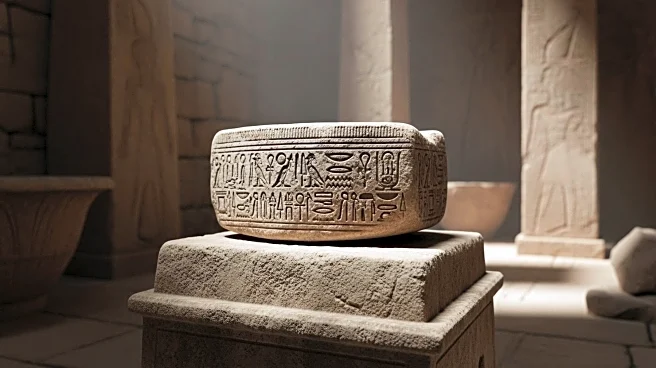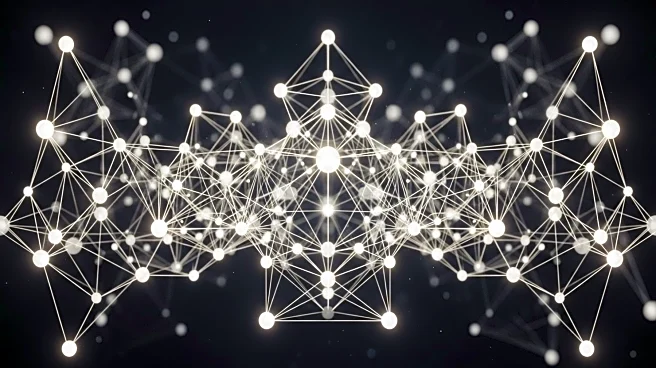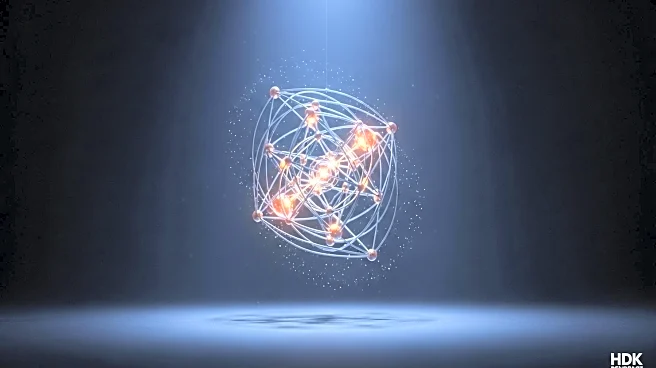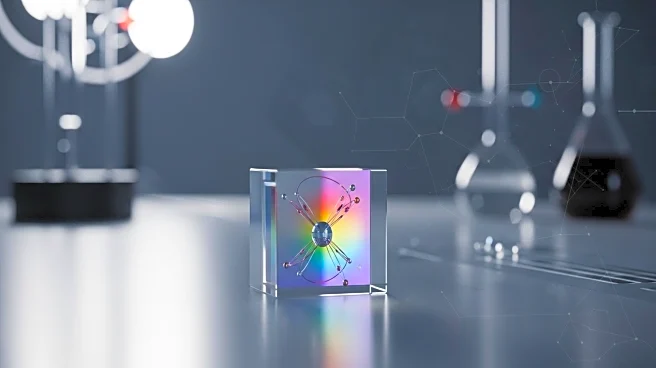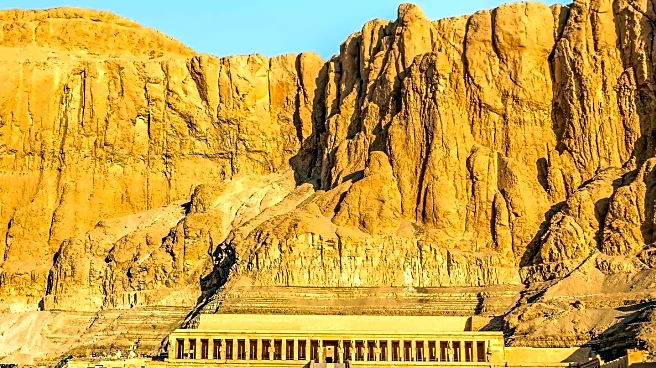What's Happening?
A research team led by Binghamton University archaeologist Carl Lipo has confirmed that the iconic moai statues of Easter Island were moved by the ancient people of Rapa Nui using a 'walking' technique. This conclusion was reached through a combination of physics, 3D modeling, and field experiments. The team found that the statues were likely moved in a zig-zag motion along specially designed roads using ropes. The study involved creating high-resolution 3D models of the moai, which revealed design features such as wide D-shaped bases and a forward lean that facilitated their movement. The research challenges previous theories that suggested the statues were moved lying prone on wooden devices.
Why It's Important?
This discovery sheds light on the engineering capabilities of the Rapa Nui people, highlighting their ingenuity in moving massive structures with limited resources. The findings not only honor the cultural heritage of the Rapa Nui but also provide a scientific explanation for a long-standing archaeological mystery. Understanding the methods used by ancient civilizations can offer insights into sustainable engineering practices and resource management. The research also emphasizes the importance of evidence-based approaches in archaeology, countering speculative theories with scientific validation.
What's Next?
The research invites further exploration into the construction and transportation methods of other ancient structures worldwide. It also sets a precedent for using modern technology, such as 3D modeling, to solve historical puzzles. Future studies may focus on the broader implications of these findings for understanding the social and cultural dynamics of the Rapa Nui civilization. Additionally, the research team encourages others to challenge their findings, promoting a scientific dialogue that could lead to new discoveries.
Beyond the Headlines
The study highlights the role of interdisciplinary approaches in archaeology, combining physics, engineering, and anthropology to solve complex problems. It also underscores the potential for modern technology to unlock secrets of the past, offering new perspectives on ancient human achievements. The research may inspire similar studies in other regions, fostering a deeper appreciation for the technological prowess of ancient societies.

